Waterfalls are among the most breathtaking evidence of Thailand’s richness of natural beauty. Some of the most spectacular waterfalls in the world are in Thailand, from the misty cascades of Erawan National Park to the roaring strength of Thi Lo Su. These natural attractions may be found all around Thailand, from the northern highlands to the southern jungles, giving tourists a taste of the country’s wide variety of breathtaking scenery.
Thailand’s waterfalls are a must-visit for any traveler, whether you’re a thrill-seeker looking to trek through the forest or a peace-seeker in search of a tranquil respite. This blog will focus on some of Thailand’s most breathtaking waterfalls, including where to discover them, what makes them special, and how to make the most of your visit. Put on your walking shoes, take your camera, and get ready to explore the wonders of Thailand’s waterfalls.
WHAT MAKES THAILAND’S WATERFALLS POPULAR?
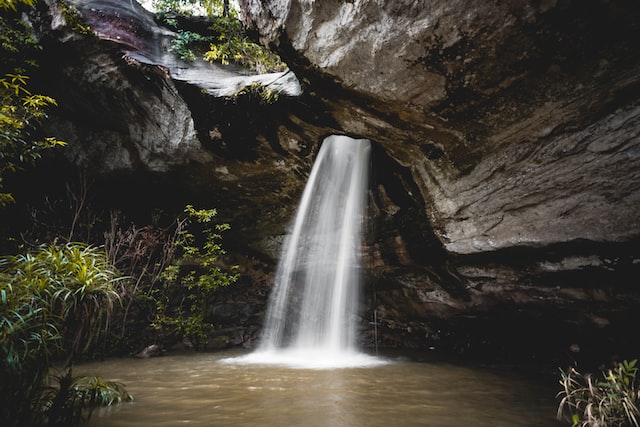
Waterfalls in Thailand are some of the country’s most famous landmarks. The following are some of the reasons why Thai waterfalls are so popular:
🟦 Natural Beauty
Thailand’s waterfalls are extremely popular with sightseers owing in large part to their stunning natural beauty. The waterfalls in this country are located in some of the most breathtaking landscapes, tucked away in the midst of verdant forests and towering mountains. When you’re in one of these beautiful natural settings, you can truly unwind and recharge your spirits. The fact that many of these waterfalls are within protected natural areas makes them particularly appealing to eco-tourists. The Erawan Waterfall, the Huay Mae Khamin Waterfall, and the Mae Ya Waterfall are among the most visited waterfalls in all of Thailand. These waterfalls are all incredibly beautiful and have their own distinct personalities.
🟦 Accessibility
The ease with which visitors can reach them is another reason why Thailand’s waterfalls are so popular with tourists. It is possible to drive or walk to many of the country’s waterfalls that are close to major population centers. They are therefore ideally situated for visitors who don’t have much time to spare. Several of Thailand’s waterfalls may be reached by hiking trails that are both well-maintained and easy. They welcome hikers of all ages and levels of physical ability. Waterfalls in Thailand are easily accessible, making them a great vacation spot for families with young children who can take a leisurely stroll to the waterfall without worrying about exhausting themselves.
🟦 Swimming and Relaxation
Thailand’s waterfalls are popular destinations for sightseeing, swimming, and general leisure. Natural pools at many waterfalls are great for a cool plunge on a warm day. Many of these pools feature verdant landscaping that provides a tranquil, one with a nature vibe. The waterfalls of Thailand are perfect for a day trip into the wilderness. This is because not only are they beautiful, but visitors can also bring a picnic and lounge under the trees. Namtok Ton Nga Chang Waterfall in Khao Yai National Park and Hin Taek Waterfall in Sai Yok National Park are two of the most well-known waterfalls in Thailand. Both are excellent spots for a refreshing swim and some rest and relaxation!
🟦 Adventure Activities
Several Thai waterfalls include exciting sports like ziplining, rock climbing, and rappelling in addition to the usual swimming and relaxation. Adventurers who are looking for a new and exciting approach to exploring their surroundings often choose to participate in such pursuits. The Mae Klang Waterfall offers ziplining, the Erawan Waterfall has waterfall rappelling, and the Mae Ya Waterfall is a popular spot for rock climbing. Travelers looking to spice up their time in Thailand and make some truly amazing memories should definitely consider participating in some of these activities.
🟦 Cultural Significance
Adding to their attraction and significance in Thailand’s cultural history, waterfalls are in local mythology and tradition. Waterfalls are revered in Thai culture because they are said to be home to mystical beings and spirits. Thai waterfalls are more than just a scenic attractions. They are also steeped in mythology and folklore that contribute to the country’s cultural heritage. The Huay Mae Khamin Waterfall, for instance, is believed to be the domain of a forest-guarding spirit. While the Erawan Waterfall takes its name from the Hindu god Indra’s trusted mount, a three-headed elephant. The cultural significance of Thailand’s waterfalls elevates them above the status of simple tourist attractions and provides insight into the country’s rich and varied past.
You can also click here to know why is Thailand famous in other aspects.
TOP 10 MOST FAMOUS WATERFALLS IN THAILAND
🟩 The Waterfall of Erawan
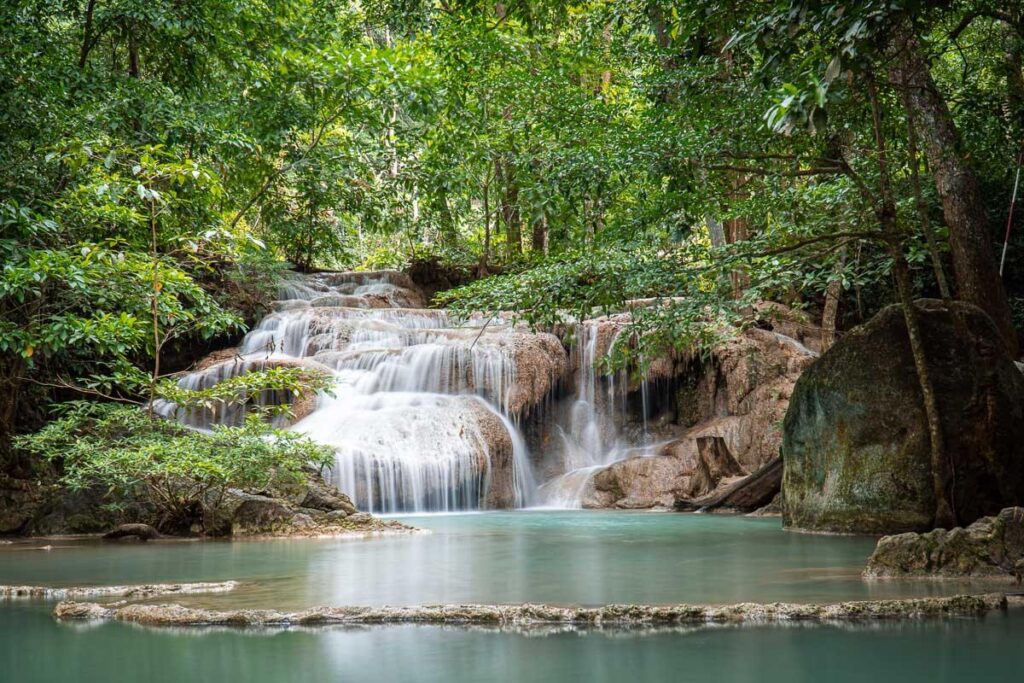
Erawan Falls are not only the most well-known but also among the best waterfalls in Thailand. Travelers to Kanchanaburi’s Erawan National Park often stop by these waterfalls. Tourists, photographers, and sight-seers all congregate here when the temperature rises. There are seven distinct levels of streams that flow directly through the jungle, with gorgeous emerald pools in between each one. These are much more bearable because of the many refreshing pools of cool, pure water that dot the grounds.
🟩 Mae Surin Waterfall
That Mae Surin Waterfall is everyone’s favorite part of visiting Namtok Mae Surin National Park says a lot. If you visit the park in the extreme northwest of Thailand, you’ll realize why this waterfall is widely regarded as one of the most magnificent in the country. Almost out of nowhere, this horsetail waterfall plummets 100 meters down the mountainside and into the rocks below, a stunning sight that draws tourists from all over the world and all over the country. Because of how frequently people visit, the walk to the base of Mae Surin Waterfall has viewing spots.
🟩 The Waterfalls of Koh Luang
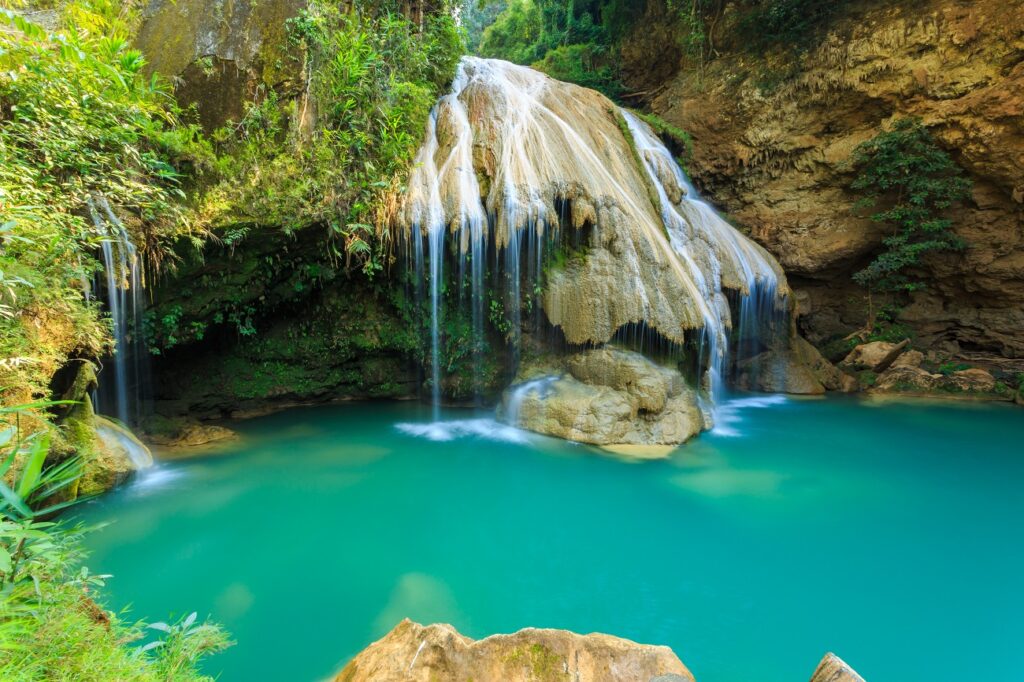
Koh Luang Waterfall is one of the best waterfalls in Thailand if you’re looking for a tranquil cascade in the middle of the jungle. Located in northern Thailand’s Mae Ping National Park, this breathtaking waterfall plunges over limestone cliffs into a shimmering green pool below. The craggy cliffs that surround the 20-meter-tall Koh Luang Waterfall almost give the illusion that it is the rock, not the water, that is falling. Although it’s just one of several sights in Mae Ping National Park, this waterfall is a favorite among the locals, and for good reason.
🟩 Falls of Wachirathan
The breathtaking Wachirathan Waterfall may be found elsewhere in Doi Inthanon National Park, closer to Thailand’s highest mountain. Visitors can see the whole 80-meter drop of Wachirathan Waterfall through the mist it generates, which sometimes forms a rainbow. You shouldn’t have any trouble discovering and admiring the raw power of this waterfall because it is well-marked and has a designated viewing terrace at the base of the falls, just a few minutes walk from the road. Be careful not to fall if it starts to rain, and carry an umbrella if you don’t want to get drenched.
🟩 Khlong Lan Waterfall
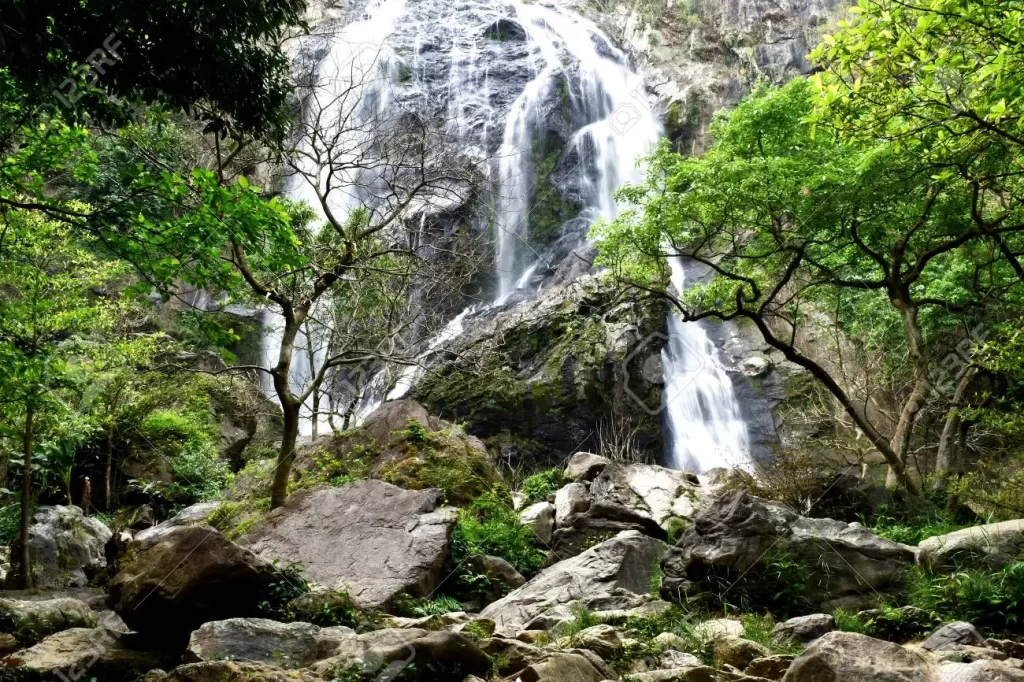
Khlong Lan Waterfall, located in the beautiful Khlong Lan National Park among the forest and mountains, is a sight not to be missed. This spectacular waterfall in central Thailand creates a stunning first impression, plunging down 100 meters over a rocky cliff and rippling over rocks for much of the way down. The convenience of having a good vantage point for the falls just a few minutes stroll down a mild trail from the park office is one of its many appealing features. Historical ruins and the beautiful Khlong Nam Lai Waterfall are just two of the attractions that can be found in Khlong Lan National Park.
🟩 Thi Lo Su Waterfall
Thi Lo Su Waterfall is a breathtaking natural wonder that has been called both the tallest and largest waterfall in Thailand. This stunning waterfall has three levels and may be found in the central Thai sanctuary of Umphang. This waterfall, which is fed by the Mae Klong River, is about 450 meters in width and 250 to 400 meters in height, according to some experts. Walk to and from each level would take about 90 minutes total. At the foot of the falls, there are pools where guests can cool off and swim.
🟩 Waterfalls of Bua Thong (Sticky Waterfalls)
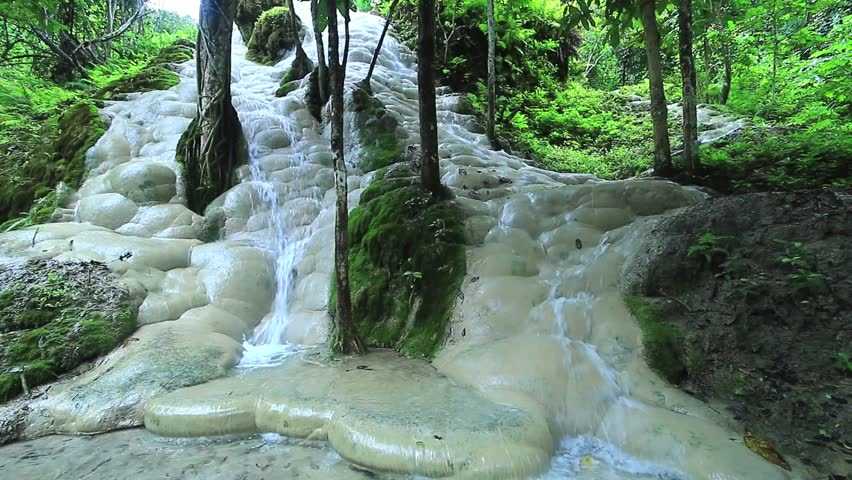
The Bua Thong Waterfalls are not the largest waterfalls in Thailand, but they are among the most unique and fascinating. This unusual natural attraction, Sticky Waterfalls, is only 1.5 hours north of Chiang Mai. It gets its moniker from the coarse limestone surface that it runs over. And this makes it easy for tourists to stroll through and even up its five levels. While the water is very soothing, there are unfortunately no bathing pools or any designated swimming areas at the waterfall itself.
🟩 The Pha Charoen Waterfall
The Pha Charoen Waterfall, which has 97 limestone steps, is a beautiful and calming sight to witness. The waterfall, which is visible in the mountains of Thailand’s Namtok Pha Charoen National Park, resembles a majestic staircase as it gracefully flows through the forest. The best view of the waterfall can be had with only a short hike from the road, though trails lead further up the cascade’s several tiers. The bright side is that it is only one of many waterfalls in Thailand on the so-called “Death Highway” between Mae Sot and Umphang near the Myanmar border.
🟩 Mae Ya Waterfall
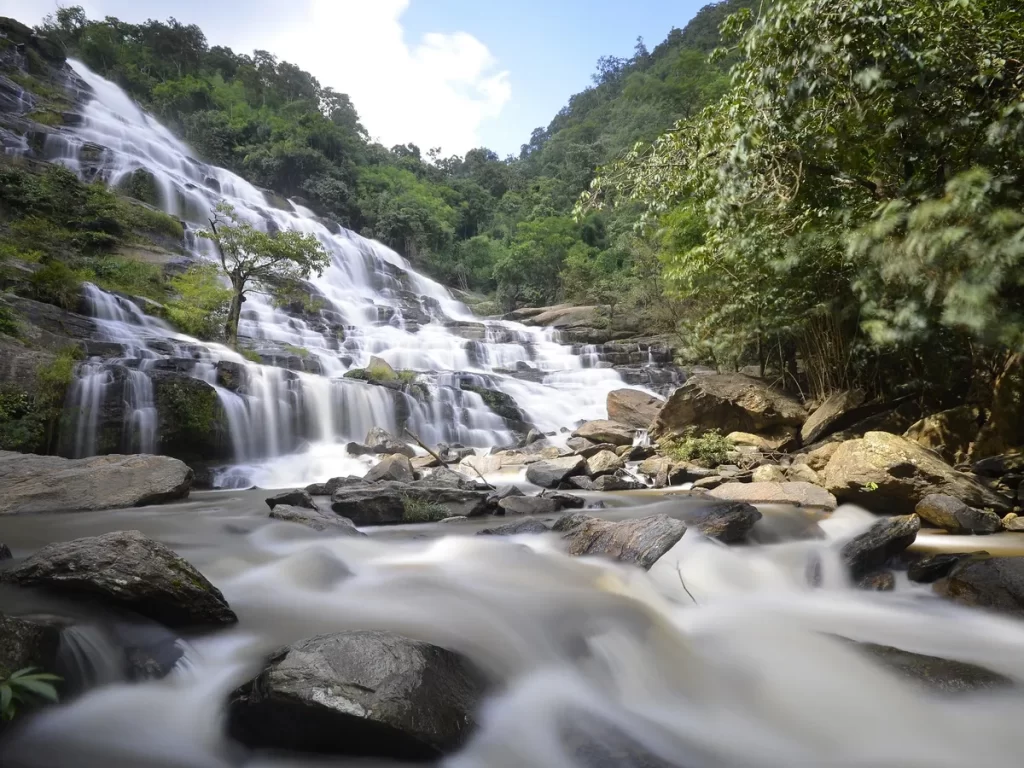
Although it is one of the most spectacular waterfalls in Thailand, the majestic Mae Ya Waterfall is generally devoid of tourists because of its remote position. Doi Inthanon National Park in Chiang Mai Province in the country’s north is home to a stunning natural attraction that is often overlooked by visitors because of its remote location. Those who take the time to visit will be rewarded with a breathtaking view of a 260-meter waterfall that cascades over the edge of a large, stepped cliff.
🟩 The Waterfalls at Khun Korn
Khun Korn Waterfall is an impressive and beautiful horsetail waterfall located in northern Thailand, east of Chiang Rai. It’s accessible via a relaxing and pleasurable stroll through the lush bamboo groves of Khun Korn Forest Park. If you stick to the trail, you’ll reach the spot where the roaring water crashes down the rocky slope and into the pool below, a height of 70 meters. So, you should bring appropriate clothing and footwear, unless you don’t mind being wet.
TIPS TO ENJOY YOUR WATERFALL TRIP
Waterfalls in Thailand are among the world’s most beautiful, and the country’s verdant landscape and diverse animal life further add to their allure. If you’re visiting Thailand’s waterfalls, follow these tips to have the best time possible:
🟪 Schedule your trip for the rainy months.
In Thailand, the wet season usually begins in May and continues through the end of the year in October. Although the rain may deter some tourists, this is the perfect time to see the waterfalls at their most spectacular. The rainfall increases the vigor of the surrounding vegetation and the power of the cascading waterfalls.
During the rainy months, some waterfalls may be inaccessible for safety reasons. This is due to the fact that strong rainfall can lead to flash floods, which can be harmful to tourists. It’s smart to double-check that a waterfall is open and secure before making the trip out there.
🟪 It’s important to dress and walk comfortably.
Some of Thailand’s waterfalls need a hike or a climb to access, so tourists should dress comfortably. Several routes might become slick. This is due to rain or spray from the waterfall. So, it’s necessary to have shoes with strong traction and the ability to manage damp situations. Comfortable, moisture-wicking clothing is also advisable, as the weather in Thailand may be hot and muggy.
Bring a swimsuit or change of clothes if you intend to cool yourself in the waterfall’s pool. Visitors can swim at their leisure in some waterfalls, while others have designated swimming places. Verify the presence of any safety or pollution warnings before entering.
🟪 Wear protective clothing and pack bug spray.
Protecting yourself from the sun and insects is essential in Thailand’s climate. If tourists expect to spend a lot of time in the sun, they should apply a high-SPF sunscreen liberally to any skin. Mosquitoes, which may spread diseases like dengue fever and malaria, are only one of the many types of insects in Thailand.
It’s worth noting that certain waterfalls have signs restricting the use of bug repellant and sunscreen. This is due to the potential harm these products pose to the local ecosystem. Always read all signs and cautions in the area before to using any items.
🟪 Bring a waterproof camera.
It is advisable that visitors bring a camera that can withstand the elements if they plan on taking photos of the waterfalls. Since tourists may wade through water or get sprayed by the waterfall, a camera that can withstand wet conditions is better. If you don’t have access to a waterproof camera, a protective case for your standard camera or phone will do in a pinch.
Some waterfalls may not allow the use of cameras or drones. This is because the noise or flash can scare away the local wildlife. You should look around for any signs or warnings that would prevent you from taking pictures or videos before you start.
🟪 Conserve natural resources.
It’s crucial that visitors to waterfalls observe environmental guidelines and safety precautions. Don’t leave any trash behind, stick to the trails, and don’t bother the local wildlife. Because it can destabilize the local environment, tourists should not take any of the local flora or fauna home with them.
Swimming is not allowed in some parts of the waterfall. While climbing on rocks and trees is prohibited in others. It’s crucial that visitors familiarize themselves with the waterfall’s particular regulations before they arrive.
🟪 Bring snacks and water.
Hikers and explorers in Thailand should stock up on food and drink before venturing out to the country’s waterfalls, as they may be out for several hours. Granola bars and fresh fruit are great examples of portable, nonperishable snacks. Tourists should fill up their own water bottles or purchase a hydration pack. This is because they need to consume at least 8-10 glasses of water daily while in the country.
Visitors to a waterfall should be aware that there may be no local services. Examples are restaurants or shops, and should, therefore, prepare ahead and pack their own provisions.
🟪 Think about getting a guide.
Hiring a guide might be helpful for tourists who are not familiar with the area or those who have an interest in learning more about the local flora and wildlife. A local guide can assist tourists to stay safe and sound while also enlightening them on the area’s flora, fauna, and landscape.
Guided tours and activities like rappelling and ziplining may be available at some waterfalls. These pursuits can be exciting ways to explore the waterfall and its surroundings. But only if they are carried out in a safe and responsible manner!
FINAL WORDS
Thailand’s breathtaking waterfalls will surely captivate you. Each waterfall is unique, from Erawan Falls’ roar to Mae Ya Waterfall’s serenity.
As you pass through beautiful jungles and dazzling lakes, you can’t help but be awestruck. Thailand’s waterfalls will capture you with their tranquility!
Thailand’s waterfalls appeal to both adventurers and nature lovers alike. Why not visit this captivating country and experience its flowing waters? Awe-inspiring memories are guaranteed!
